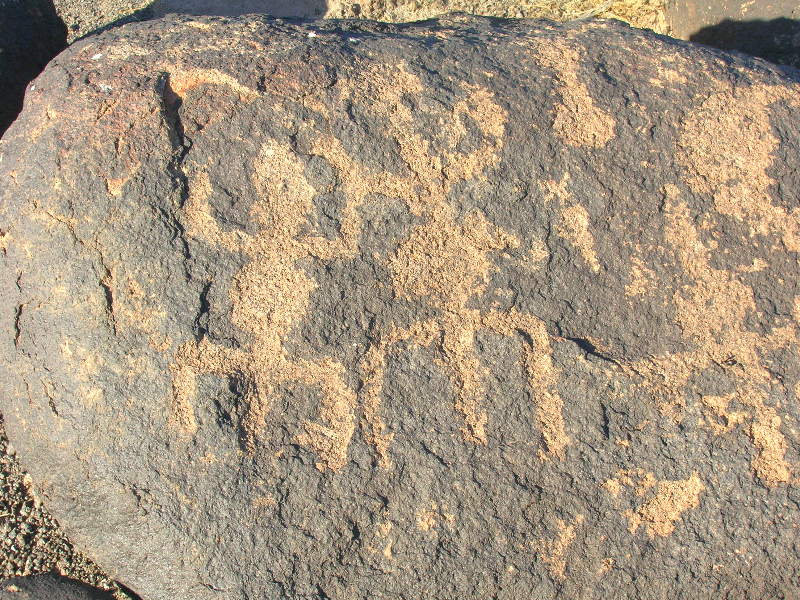For thousands of years, petroglyphs have preserved the hopes, dreams and desires of ancient cultures in the rocks and sediments around Yuma County.

Petroglyphs are the end result of a reductive process where a person would carve or peck images into the patina of rocks and were used by Native Americans to tell stories, describe significant events, and mark trails throughout the Southwest.
In the Yuma area, residents can find petroglyphs as old as 9,500 years, but it is extremely difficult to give exact dates on them since the process of forming petroglyphs renders carbon dating useless.
“Unlike in pictographs, where you leave something behind, petroglyphs don't leave anything, they take something away,” said Tom Jones U.S. Bureau of Land Management Yuma Field Office archaeologist. “(Native Americans) would use rocks to make them. And when it's rock on rock, it's almost impossible to carbon date.”
In lieu of carbon dating, archaeologists must use forensic evidence found near the petroglyph sites to determine an approximate date.
By examining both the petroglyph's motifs and figures and the associate materials found near a site such as ceramics, tools, etc., archaeologists can piece together the who and when of a petroglyph's origin, said Jones.
Based on the evidence around the Yuma sites, most of the petroglyphs were created during the Patayan and Hohokam period (700 A.D. to 1450 A.D.) but some are much older.
“There have been archaic people in the (Yuma) region for thousands of years,” Jones said. “So it's possible some could date all the way to 7500 B.C.”
Since the sites are extremely fragile and out of respect to Native American tribes in the area who revere and respect their ancestors' petroglyphs, the BLM does not publish the locations in Yuma.
But residents can travel to the BLM managed heritage sites where many petroglyphs which are similar to the ones found in Yuma can be viewed.
The largest collection can be found at the Painted Rocks Petroglyph Site located just outside Gila Bend off Painted Rock Dam Road, where around 800 images are inscribed on basalt boulders, according to Yuma Visitor's Bureau's Guide.
To get there, take Interstate 8 100 miles east to exit 102 and follow Painted Rock Dam Road north for 10.7 miles and turn left on Rocky Point Road. The site is approximately a half mile down Rocky Point Road.
Closer to Yuma is Sears Point, an area adjacent to the Gila River where ancient cultures traveled through and lived since 500 A.D. Many Native Americans, Spanish explorers and missionaries passed through the site over the past 1,500 years, leaving myriad artefacts behind for contemporary visitors to enjoy, according to BLM's website.
To get to Sears Point travel approximately 75 miles east on I-8 to the Spot Road exit. Take the north frontage road east to Avenue 76 1/2 E. Drive along the dirt road for seven miles to reach the site.
East of Wellton lies Antelope Hill, where visitors can see primarily human figures etched into the dark outer rock. To get there, travel east on I-8 to exit 37 and follow Antelope Hill Road. Once you reach the metal bridge near the Gila River, turn right toward the picnic area and information kiosk, according to the Visitor Bureau's Guide.
When visiting any of the sites in Arizona, BLM wants to remind residents that the petroglyphs are extremely fragile and should never be touched.
“We like that you go and visit the sites,” Jones said. “But please do not touch them.”
Author: Darren Daronco | Source: Yuma Sun [July 10, 2011]